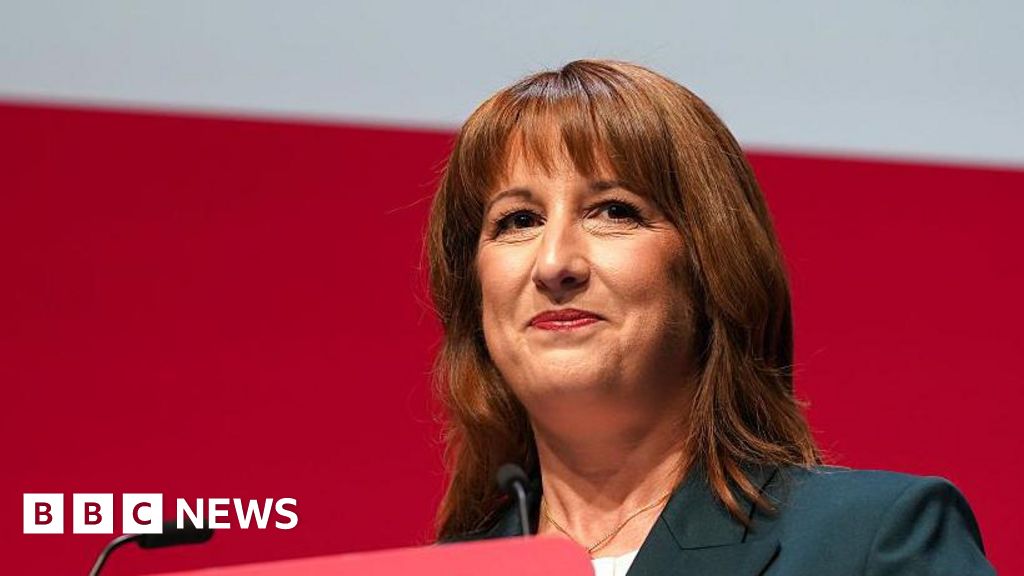Small businesses in Akron’s Great Streets neighborhoods can apply for $400,000 in federal grants – Signal Akron

City of Akron Initiative for Sustainable Urban Development and Economic Growth
The City of Akron has announced the availability of two grant programs for businesses located within its 13 Great Streets Neighborhood Business Districts. This initiative is a targeted effort to foster local economic vitality and urban renewal, directly aligning with several United Nations Sustainable Development Goals (SDGs). Since its inception in 2018, the Great Streets program has channeled over $2 million into local businesses, reinforcing the city’s commitment to sustainable and inclusive growth.
The Great Streets Akron Initiative: A Framework for Sustainable Communities (SDG 11)
The Great Streets Akron Initiative is designed to bolster the city’s neighborhood business districts, which are crucial for creating sustainable, resilient, and inclusive urban environments. The program’s objectives directly support SDG 11 (Sustainable Cities and Communities) by aiming to:
- Enhance walkability and safety.
- Improve neighborhood health and social outcomes.
- Foster community pride and engagement.
- Generate local job opportunities.
- Increase the viability of locally-owned businesses.
Designated Neighborhood Business Districts
The initiative targets 13 key districts, with downtown Akron serving as an honorary 14th member. These districts are central to the city’s strategy for localized economic and community development.
- Copley East
- Ellet
- Firestone/Aster Avenue
- Goodyear Heights
- Kenmore
- Maple Valley
- Merriman Valley
- Middlebury
- North Hill
- South Arlington
- Sherbondy Hill
- Wallhaven
- West Hill
Grant Programs Aligned with Sustainable Development Goals
The available grants are funded by Community Development Block Grants from the U.S. Department of Housing and Urban Development. Applications for the following programs must be submitted by September 30.
1. The Micro Enterprise Business Improvement Grant
This grant program is dedicated to fostering entrepreneurship and ensuring economic stability, directly contributing to SDG 8 (Decent Work and Economic Growth) and SDG 1 (No Poverty).
- Total Funding: $100,000
- Individual Grant Amount: Up to $5,000 per business.
- Eligibility: Entrepreneurs in the Great Streets districts who own businesses with five or fewer employees.
- Purpose: To support general operations, business development, and provide recipients with professional advisory services to ensure long-term success.
2. The Façade/Building Improvement Grant
This grant focuses on upgrading physical infrastructure, a key component of SDG 9 (Industry, Innovation and Infrastructure) and SDG 11 (Sustainable Cities and Communities).
- Total Funding: $300,000
- Individual Grant Amount: Up to $20,000 in matching funds.
- Eligibility: Businesses within the Great Streets districts requiring physical improvements.
- Purpose: To fund exterior and site improvements that enhance the safety, accessibility, and aesthetic value of the business districts. Eligible projects include:
- Façade renovations
- Brick and masonry cleaning
- Installation of new doors and windows
- Signage improvements
Program Administration and Resources
The City of Akron provides comprehensive support for its small business community. Further assistance and resources are available through the Great Streets Akron webpage and the Greater Akron Business Navigator. For specific inquiries regarding the grant application process, interested parties may contact Small Business Administrator Isaiah Young.
SDGs Addressed in the Article
The article on Akron’s “Great Streets” initiative highlights local government efforts that directly and indirectly connect to several Sustainable Development Goals. The program’s focus on supporting small businesses, improving urban infrastructure, and fostering community well-being aligns with the core principles of the SDGs.
-
SDG 8: Decent Work and Economic Growth
This goal is central to the article. The initiative is designed to stimulate the local economy by providing financial support to small and micro-enterprises. By offering grants for operations, development, and improvements, the program aims to enhance business viability and create employment opportunities.
“The Great Streets Akron Initiative is a program that supports the city’s neighborhood business districts and the locally owned businesses located within them… [to] create job opportunities and, through co-location, increase business viability while contributing to the local economy.”
-
SDG 11: Sustainable Cities and Communities
The program is fundamentally an urban development project. It targets specific “Neighborhood Business Districts” to make them more sustainable, inclusive, and safe. The focus on improving building facades, walkability, and community pride directly contributes to creating better urban environments.
The initiative’s goals include helping to “build walkability, improve neighborhood health outcomes, build sociability, increase community pride, improve safety.”
-
SDG 9: Industry, Innovation and Infrastructure
This goal is addressed through the “Façade/Building Improvement Grant.” By providing funds for physical upgrades like facade renovations, new doors, and windows, the program supports the improvement of local business infrastructure, making it more resilient and attractive, which in turn supports economic activity.
“This grant of $300,000 will help pay for exterior improvements and/or site improvements of businesses. Eligible items include, but aren’t limited to: facade renovations, brick and masonry cleaning, installation of new doors and windows and signage improvements.”
-
SDG 17: Partnerships for the Goals
The initiative is a clear example of a multi-stakeholder partnership. It involves collaboration between a federal government department (U.S. Department of Housing and Urban Development), a municipal government (The City of Akron), and the private sector (local entrepreneurs and businesses).
“The City of Akron has been awarded Community Development Block Grants provided by the U.S. Department of Housing and Urban Development.”
Identified SDG Targets
Based on the article’s content, several specific SDG targets can be identified as being directly advanced by the Great Streets program.
-
Target 8.3
“Promote development-oriented policies that support productive activities, decent job creation, entrepreneurship, creativity and innovation, and encourage the formalization and growth of micro-, small- and medium-sized enterprises, including through access to financial services.”
Explanation: The entire program is a development-oriented policy. The “Micro Enterprise Business Improvement Grant” specifically targets entrepreneurs and businesses with five or fewer employees, providing them with direct access to financial services (grants) to support their operations and growth.
-
Target 11.3
“By 2030, enhance inclusive and sustainable urbanization and capacity for participatory, integrated and sustainable human settlement planning and management in all countries.”
Explanation: The Great Streets initiative is a form of integrated and sustainable urban planning. It focuses on revitalizing 13 specific business districts as a strategy to improve the economic and social health of the wider neighborhoods, demonstrating a planned approach to urban management.
-
Target 11.a
“Support positive economic, social and environmental links between urban, peri-urban and rural areas by strengthening national and regional development planning.”
Explanation: This initiative represents city-level development planning aimed at strengthening the economic and social fabric within Akron. By investing in neighborhood business districts, the city is fostering positive links that contribute to overall urban vitality and resilience.
-
Target 17.17
“Encourage and promote effective public, public-private and civil society partnerships, building on the experience and resourcing strategies of partnerships.”
Explanation: The funding and implementation structure described in the article is a classic public-private partnership. Federal funds from HUD are administered by the City of Akron to support private businesses, demonstrating a collaborative approach to achieving development goals.
Implied Indicators for Measurement
The article provides several quantitative and qualitative data points that can serve as indicators to measure progress towards the identified targets.
-
Indicators for Target 8.3
Explanation: The article provides specific financial figures and criteria that can be used to track the support provided to small businesses.
- Total financial resources provided to small enterprises: The article mentions “$100,000” for the Micro Enterprise grant, “$300,000” for the Façade grant, and a historical total of “more than $2 million” since 2018.
- Number of micro-enterprises supported: The program targets businesses with “five or fewer employees,” and the number of grant recipients would be a direct indicator.
- Number of businesses receiving non-financial support: The article states that grant recipients will be connected with “professional advisers who will provide guidance,” which is a measurable form of support.
-
Indicators for Target 11.3
Explanation: The scope and structure of the program itself are indicators of progress in sustainable urban planning.
- Number of administrative/planning units with a revitalization strategy: The article identifies “13 Neighborhood Business Districts” as the focus of this initiative.
- Number of businesses participating in the revitalization program: The number of applicants and recipients of the grants would indicate the level of participation in the city’s planning efforts.
Summary of SDGs, Targets, and Indicators
| SDGs | Targets | Indicators Identified in the Article |
|---|---|---|
| SDG 8: Decent Work and Economic Growth | 8.3: Promote development-oriented policies that support entrepreneurship and the growth of micro-, small- and medium-sized enterprises. |
|
| SDG 11: Sustainable Cities and Communities | 11.3: Enhance inclusive and sustainable urbanization and capacity for integrated human settlement planning. |
|
| SDG 9: Industry, Innovation and Infrastructure | 9.1: Develop quality, reliable, sustainable and resilient infrastructure to support economic development. |
|
| SDG 17: Partnerships for the Goals | 17.17: Encourage and promote effective public, public-private and civil society partnerships. |
|
Source: signalakron.org

What is Your Reaction?
 Like
0
Like
0
 Dislike
0
Dislike
0
 Love
0
Love
0
 Funny
0
Funny
0
 Angry
0
Angry
0
 Sad
0
Sad
0
 Wow
0
Wow
0
























;Resize=805#)























































